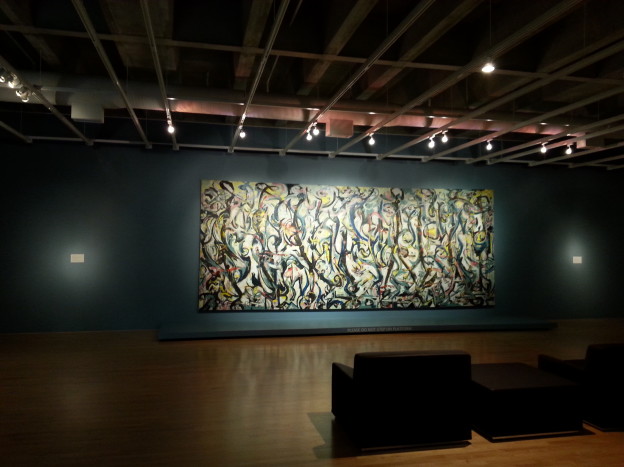More than 250,000 people have lined up to see a colorful 20-foot long, 8-foot wide modern abstract mural painted in 1943 by Jackson Pollock, considered by experts to be one of the most significant works of modern American art.
The University of Iowa Museum of Art recently reported the attendance numbers for “Jackson Pollock’s Mural: Energy Made Visible” broke the record for the number of people visiting an Iowa art exhibition.
Pollock’s Mural is a key work in American abstract art, Sean O’Harrow, the executive director of the museum, said.
“Mural marked the beginning of the American modern abstract-art form,” O’Harrow said. “Demonstrating its significance to the world by creating an international touring exhibition with art mostly from the [UI not only educates others about this art and about the development of American art, but also shows Iowans they can be proud of this unique learning resource based here at the University of Iowa.”
Pollock painted the mural in 1943, said Scott Schaefer, curator emeritus of the Getty Museum in California.
“He painted it to fill the narrow entry of his patron Peggy Guggenheim’s New York apartment,” he said. “It’s 20 feet long and 8 feet tall. That’s slightly terrifying to a lot of people today, just because of its scale.”
Schaefer said the painting probably became popular because of the interaction it has with the person looking at it.
“There are large-scale black figures that seem to move across the canvas, and if you look carefully, you can make out about seven of these figures. So it’s a picture about transition — your transition from the outside to the inside, from one end of this space to the other,” he said. “In this narrow space, and with very low lighting, this must have been a fairly terrifying picture to look at.”
David Anfam, curator of the exhibition, said because Mural was painted for a private space rather than a public one explains why the painting is so interesting.
“It was intended to be seen close-up rather than from the great distance most public murals of the 1930s demanded; this helps to explain the sheer intricacy, freshness, and range of its mark-making,” Anfam said. “What Pollock achieved with Mural was to synthesize the intimate touch of the easel picture with the grand sweep of an architectural scale.”
O’Harrow said it’s the mural, and Pollock’s reputation, that draws so many people to see it.







